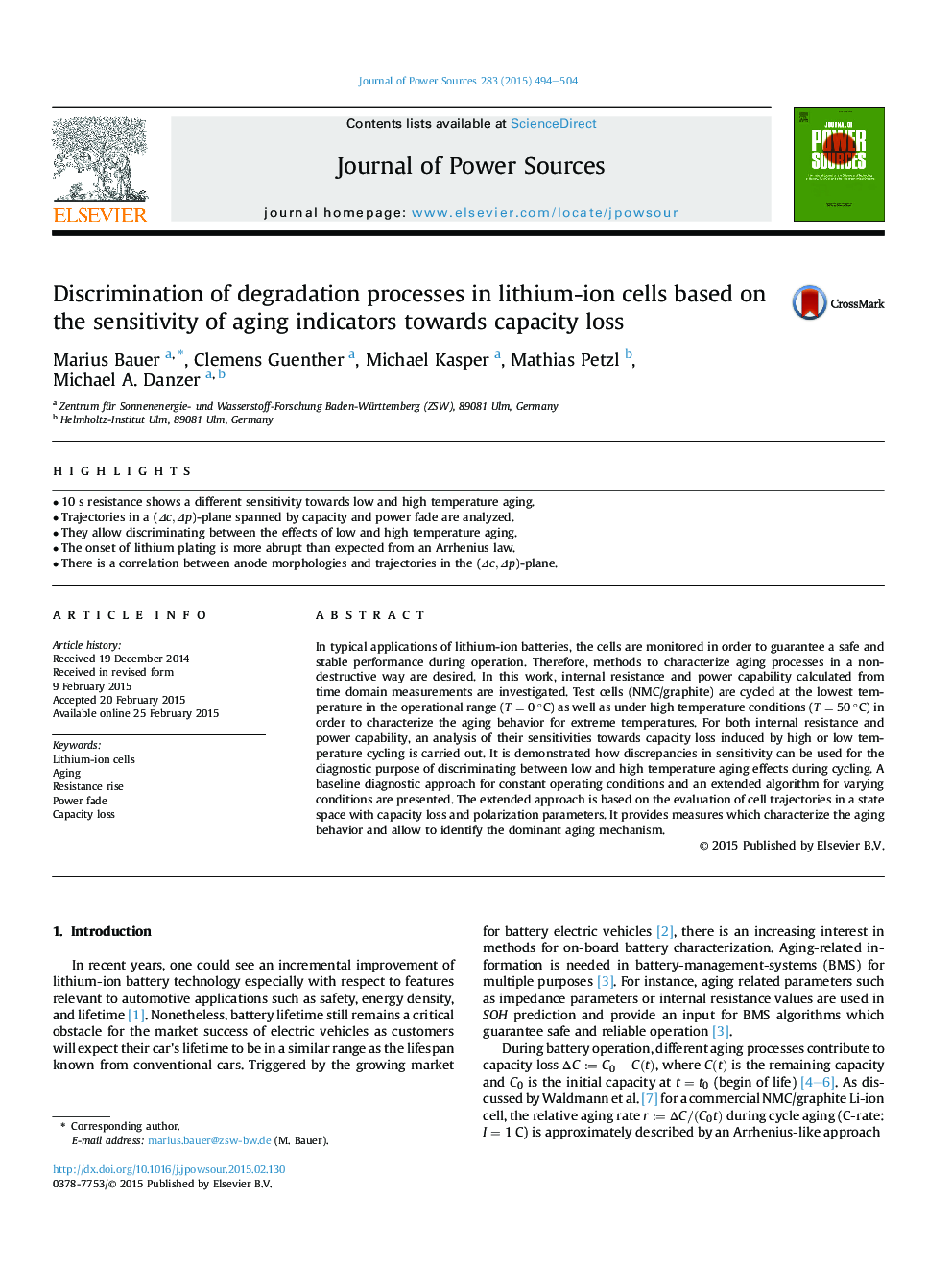| Article ID | Journal | Published Year | Pages | File Type |
|---|---|---|---|---|
| 1292846 | Journal of Power Sources | 2015 | 11 Pages |
•10 s resistance shows a different sensitivity towards low and high temperature aging.•Trajectories in a ((Δc,Δp)(Δc,Δp))-plane spanned by capacity and power fade are analyzed.•They allow discriminating between the effects of low and high temperature aging.•The onset of lithium plating is more abrupt than expected from an Arrhenius law.•There is a correlation between anode morphologies and trajectories in the ((Δc,Δp)(Δc,Δp))-plane.
In typical applications of lithium-ion batteries, the cells are monitored in order to guarantee a safe and stable performance during operation. Therefore, methods to characterize aging processes in a non-destructive way are desired. In this work, internal resistance and power capability calculated from time domain measurements are investigated. Test cells (NMC/graphite) are cycled at the lowest temperature in the operational range (T=0°C) as well as under high temperature conditions (T=50°C) in order to characterize the aging behavior for extreme temperatures. For both internal resistance and power capability, an analysis of their sensitivities towards capacity loss induced by high or low temperature cycling is carried out. It is demonstrated how discrepancies in sensitivity can be used for the diagnostic purpose of discriminating between low and high temperature aging effects during cycling. A baseline diagnostic approach for constant operating conditions and an extended algorithm for varying conditions are presented. The extended approach is based on the evaluation of cell trajectories in a state space with capacity loss and polarization parameters. It provides measures which characterize the aging behavior and allow to identify the dominant aging mechanism.
